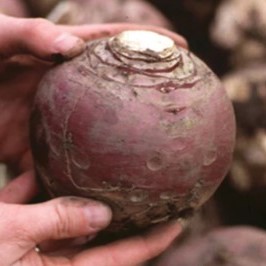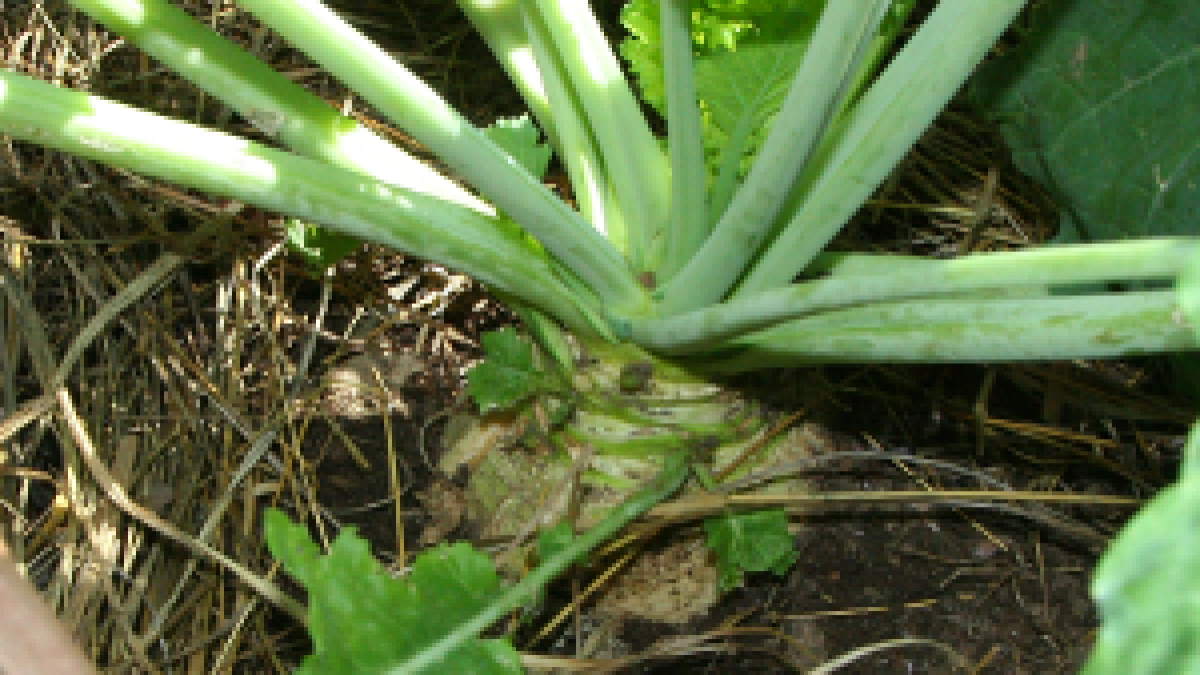RUTABAGAS & TURNIPS
As I was growing up, the kids in my family were REQUIRED to eat at least a couple of bites of rutabagas at Thanksgiving. Rutabagas had been a holiday tradition for my mother, who grew up in a small town in Minnesota with her German parents. Growing up in California, most of my friends had never heard of rutabagas and they weren’t real common, but Mom managed to find them and cook them for us. Since Mom made us eat them, it became kind of a family joke, and all visitors at our table were required to try them, too. I have learned to like them and I’ve continued that tradition myself.
Lucky me, as with all root vegetables, rutabagas grow quite well at our high altitude. Growing them here is easy, and I have added turnips occasionally to my garden which I had never eaten before my garden adventure.
RUTABAGAS

I much prefer the rutabagas rather than turnips, and only grow “ruties” at this time. They are best when eaten within a month after harvesting. They store well for quite a long time, but the longer they are stored the more pungent they become. Rutabagas are quite delicious when cooked soft (broil, steam or saute) then drenched with a garlic cream sauce & parmesan cheese.
The rutabagas I’ve grown rarely turn out round like many of the pictures I see in the seed catalogs such as this photo from Territorial Seed, nor as purple. My elongated yellow-ish rutabagas range in size quite a bit, even when all started on the same date.
GROWING INFO
I generally give my rutabagas a head start by starting them indoors in soil blocks, but I also seed them directly in the garden and they do quite well either way. Starting a few ahead in the greenhouse allows me a bit more succession of harvest. They do not require much care, just water them and harvest them when ready. They do attract aphids, and when I want to keep aphids off something else, I may grow the rutabagas nearby as a trap plant.
I have also grown rutabagas in the greenhouse, where they grew fine. In the greenhouse they attracted a LOT of aphids, and they took much longer to grow. I felt they weren’t worth the space they used and I no longer do them in the greenhouse. Besides, since they store so well I have no need to grow more in the greenhouse.
HIGH ELEVATION GROWING TIP: RUTABAGAS
Start a few rutabagas indoors in soil blocks for transplant, then a few more seeded directly in the garden when the transplants go out. This will give a nice, staggered harvest.
TURNIPS
Turnips grow very well in this climate, but I do not like them as well as the rutabagas. I think the “ruties” are sweeter. I’d heard of eating “turnip greens”, so I tried them once. Just the one time. That was plenty. No need to do that again. The ducks get the greens.
RUTABAGA & TURNIP STORAGE
Rutabagas & turnips are best stored in a good root cellar, or in our case, our cold closet. Throughout the winter months it’s kept at around 37°F with humidity around 50%. I’m now keeping them in produce storage plastic bags, which works well. I’d say they keep at least 5-6 months this way.
I’d heard about storing things in a root cellar in containers with damp wood shavings, and I tried that, but they withered up and got moldy.
RUTABAGA VARIETIES GROWN
Laurentian OP (95 Days) | DTH: 105
Magres OP (90 Days) | DTH: 90
Nadmorska (90 Days) I believe these were a bit sweeter.
- Laurie
- Revised January 2024


